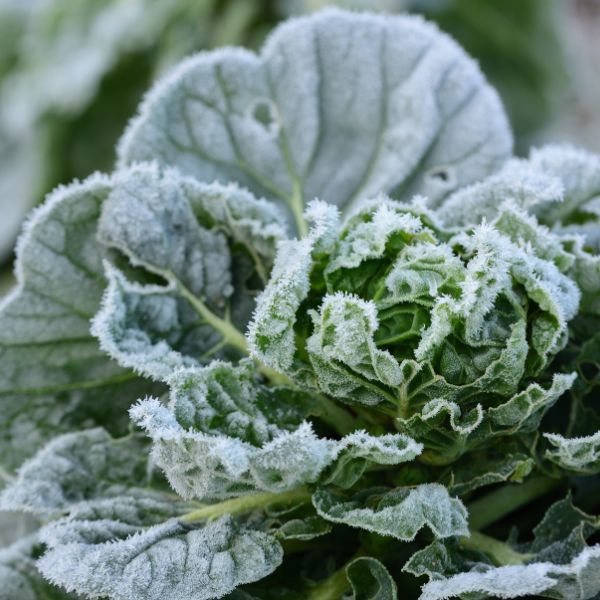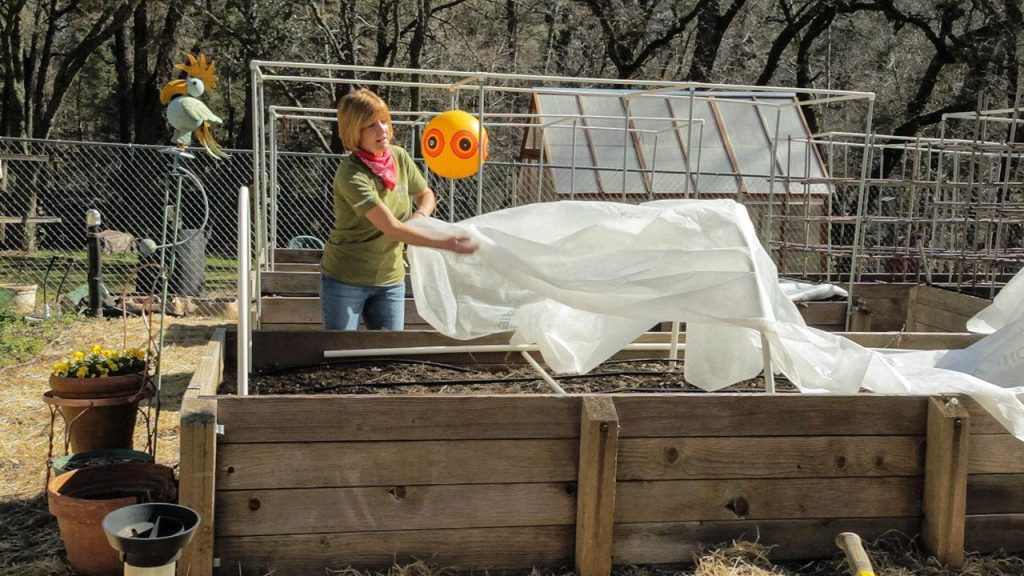Ever notice how some vegetables can shrug off a light frost while others, like basil, turn to mush at the first chill? It all comes down to frost tolerance — and understanding the difference between a light frost and a hard freeze can help you protect your garden when temperatures drop.

Frost vs. Freeze — What’s the Difference?
-
Frost happens when the air temperature dips to 32°F or slightly below, causing moisture to form ice crystals on plants and surfaces. Light frosts can look pretty but can damage tender plants, especially those with soft leaves.
-
Freeze occurs when the air temperature drops well below 32°F and stays there. This is when cell damage happens inside the plant, leading to wilted, blackened leaves — often for good.
In short: a frost might nip your plants, but a freeze will end the season for tender crops.
Frost-Tolerant vs. Hardy Vegetables and Herbs
Some plants actually like a little chill — it can even improve their flavor!
Frost-Tolerant Vegetables and Herbs (survive light frost, 28–32°F):
-
Leaf lettuce
-
Spinach
-
Swiss chard
-
Broccoli
-
Cabbage
-
Carrots
-
Beets
-
Cilantro
-
Parsley
Hardy Vegetables (tolerate a hard freeze, below 28°F):
-
Kale
-
Collards
-
Brussels sprouts
-
Turnips
-
Mustard greens
-
Garlic
-
Onions (established)
-
Chives
-
Thyme
Even with hardy plants, it’s good practice to protect them during sudden temperature drops, especially if they’re newly planted.
Here’s how to use a medium protection frost cloth in practical terms for your garden:
-
Good for cool nights when frost is expected (air temps dipping a little below freezing) but not for long, deep freezes (e.g., single-digit nights).
-
Ideal when you have hardier fall crops (leafy greens, root veggies, resilient herbs) that just need a little extra buffer, rather than full heat.
-
Since it still allows ~70% of sunlight, plants under it can continue to grow (albeit slowed) rather than go dormant. Good for keeping your fall harvest going.
-
Use it as a short-term measure: when heavy freeze is forecasted or many nights of deep sub-freezing temps, you’d step up to heavier protection or another layer.
-
Because light is reduced compared to open air, avoid using medium weight cloth for plants that need full sun and growth spurt during the covered period — they might suffer light deprivation.

How to Protect Plants from Frost
-
Use frost cloth or row covers. Lightweight frost cloth or floating row covers let in light and moisture while protecting plants from the cold.
-
Cover before sunset. Trapping the day’s warmth helps prevent frost from settling on plant leaves.
-
Anchor the edges. Use clips, bricks, or garden staples to secure the cover — you don’t want the wind carrying it off overnight.
-
Avoid black plastic. It doesn’t insulate well and can trap moisture, which leads to freezing damage.
When to Remove Frost Cloth
Remove frost cloth in the morning once the temperature rises above 35–38°F and before the sun fully warms the garden. Leaving it on too long can cause overheating and block light, especially on sunny days.
If another frost is expected that night, simply recover the plants in late afternoon.
A Few Extra Tips
-
Mulch around plant bases to insulate roots.
-
Keep soil moist. Damp soil holds heat better than dry soil.
-
Harvest tender crops early. Tomatoes, peppers, and basil won’t survive once freezing weather arrives, so pick them before the first hard freeze.
A little frost doesn’t have to spell the end of your fall garden. By understanding the difference between frost and freeze — and knowing which plants can handle a chill — you can extend your harvest well into the cool season.
So go ahead, grab that frost cloth, and keep your fall garden growing strong!
And, while you are added grab this free download on Frost Protection
Happy Gardening!
Karen
I am an affiliate of Amazon. If you click on a link and purchase anything on Amazon I will receive a small commission at no extra cost to you. Thanks


Leave a Reply